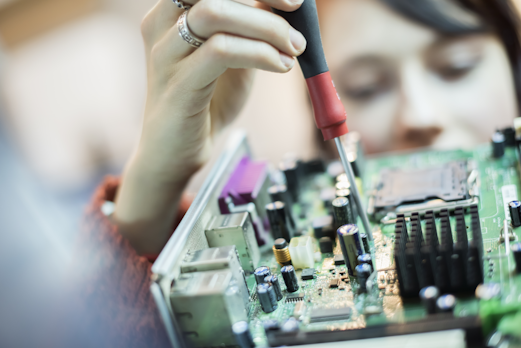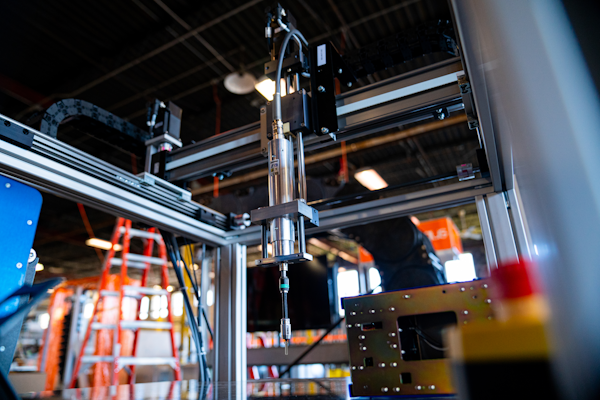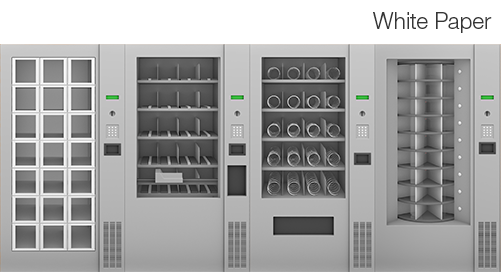Screwdriving robots: A revolution in automated assembly
With automation now a cornerstone of modern manufacturing, more and more applications are being automated than ever before. This has brought about greater efficiency and productivity for all sorts of applications, from gluing and welding to material handling and assembly.
One particularly promising application that can — and should — be automated is screwdriving. Screwdriving has long been a manual task that takes up significant amounts of time, and requires a level of precision and consistency difficult to achieve manually. Read on to learn about automated screwdriving solutions and how they can benefit businesses of all sizes.
The need for innovation in assembly
Screwdriving processes are found in the manufacture of various products, including medical devices, radio equipment, and electrical fuse boxes, among many others. In these cases, manual screwdriving is a labor-intensive and tedious process that can leave workers frustrated.

This, along with the growing demand for further efficiency, precision, and consistency in assembly tasks, has led to screwdriving robots becoming a necessity across industries.
Most traditional automated screwdriving solutions are too expensive ($100,000+) for small or medium-sized companies to implement. Additionally, traditional solutions often require extensive programming and can’t be easily configured to various screw sizes or types.
White Paper: Automated screwdriving in PCB assembly
Understanding screwdriving robots
So what is a screwdriving robot? Simply put, it’s an industrial robot — anything from a robotic arm or a cobot to a gantry — equipped with an end effector used to drive screws into various components. Different applications will require different types and configurations of robots, though cobots are one of the most common due to a lack of easily configurable gantry solutions on the market.
Related: What are the different types of end effectors?
Regardless of the type of industrial robot used, flexibility is vital. Whether due to a part needing to be manipulated to access each screw point, or different types and sizes of screws being used within a single part, a robot needs to have the ability to adjust to these requirements.
Since this level of flexibility is both difficult and expensive to achieve with traditional solutions, more affordable and accessible solutions are necessary. The solutions available from the RBTX marketplace meet these needs while also offering a number of other benefits most solutions are unable to match.

Flexible alternatives starting at $11,450
One of the primary goals of the RBTX marketplace is to lower the barriers of entry to automation for small and medium-sized businesses. To this end, products from a wide selection of industry leaders are available to be mixed and matched together to create the most affordable solution possible. Integration services are also provided to make the integration process quick and easy.
For screwdriving robots, there are a few specific benefits that set the offerings from RBTX apart from other solutions. These include:
- Modular design
- Highly adjustable
- Instant pricing
- Configuration tools
- Low-cost vision technology

These benefits allow screwdriving gantry robots to be developed for a fraction of the cost of traditional solutions. The most affordable screwdriving solutions from RBTX start at just $11,450.
Related: RBTX Marketplace White Paper
Future trends and innovations
There’s no shortage of ways screwdriving robots can continue to be improved and iterated upon. With advancements in other areas such as AI, machine learning, and collaborative robotics, it’s likely these will make their way to screwdriving robots in the coming years.
Other technologies like 3D printing and advanced sensors also have the potential to vastly improve screwdriving robots and expand their capabilities. They can make custom solutions more accessible and affordable while allowing for entirely new applications to be automated.
Conclusion
If you’re looking to stay ahead of the competition, it’s time to embrace screwdriving robots. They’re the key to unlocking efficiency in assembly processes, through boosted productivity and enhanced quality. Welcome to the future of manufacturing.



